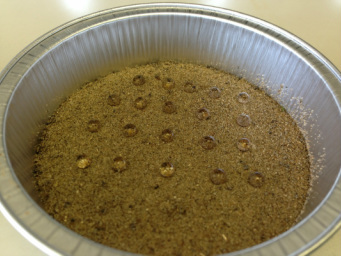
I think we should honor the ecosystem services of natural wetland systems more. One of the ecosystem services we want to get a grip on is the natural nutrient retention function of floodplains. Mostly, nutrients in flood water are only measured as dissolved fraction. However, a substantial part of the nutrients is transported as particulate nutrients (organic matter) or bound to suspended sediment and this is what we study.
We use the natural Biebrza river valley (Poland) with annual snow-melt spring flood as study area. It has a fairly undisturbed character and there is a wealth of data available on surface and groundwater hydrology and vegetation.
April 2014: A promising reconnaissance survey
Last year during the spring flood we tested our new equipment: the Phillips sampler. Water flows through a small inlet tube and into a larger PVC cylinder. There, flow velocity drops and suspended sediment (with nutrients attached) is deposited. At the end, water exits the samplers through another small tube. The sediment can be collected and show cumulative suspended particulate nutrient transport over the period of submergence. To actually know how much is deposited on the floodplain, we installed artificial grass mats. Both techniques showed promising results so last October we up-scaled our experiment to more locations and higher spatial and temporal resolution.


 RSS Feed
RSS Feed
